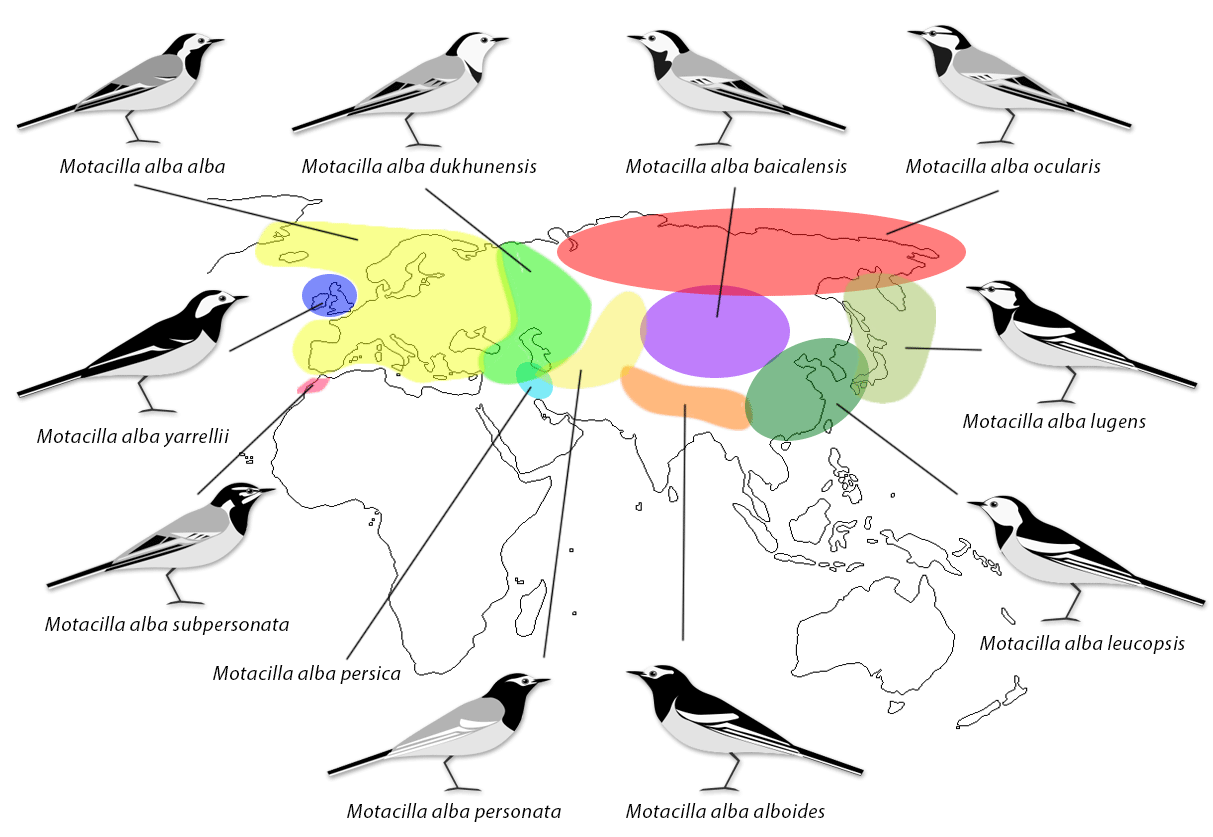Weekly birding round-up: 23 - 29 Nov 2016
After last week’s wind and rain, this week saw very different conditions as high pressure pushed in from the Atlantic. This settled things down considerably and produced a week of generally light winds but colder temperatures. Towards the end of the week, the introduction of more continental air brought even lower temperatures and the coldest night of the winter so far on 28th. Given the rather wintry feel this was, unsurprisingly, a quiet week for birds although, astonishingly, a new taxon for Britain just sneaked in at the end! Otherwise, the headlines featured an ever-shrinking core of lingering rarities, some of which may now be here for the winter.
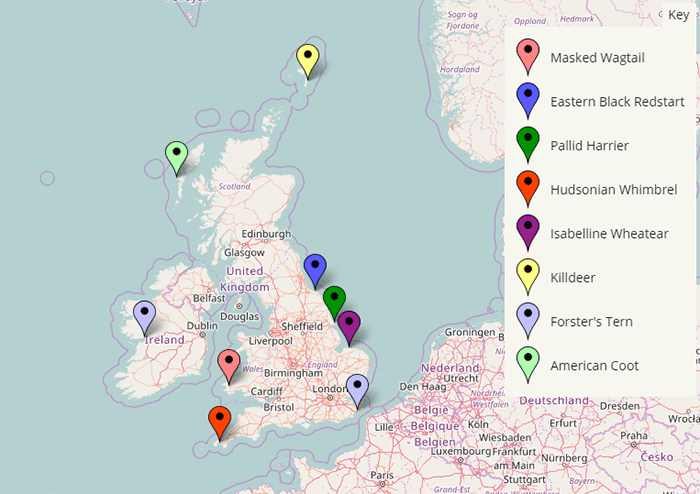
The last minute ‘bird of the week’ was a stunning ‘Masked Wagtail’ (subspecies personata) photographed on a roof at Camrose, Pembrokeshire and apparently present for some time already. Though a terrific record, it is not unexpected, however, particularly given this autumn’s deluge of eastern passerines. Despite breeding in southern Central Asia from Iran to Mongolia and wintering in the Indian subcontinent, ‘Masked Wagtail’ has a history of vagrancy, with previous northwest European records at Lista, Norway from 15th November 2003 to 9th April 2004, on Öland, Sweden on 29th April 2006 and at Risør, Norway on 21st September 2007. Nor is this the first vagrant subspecies of Pied/White Wagtail to reach Britain. This honour goes to the ‘Amur Wagtail’ (leucopsis) at Seaham, Durham in April 2005.
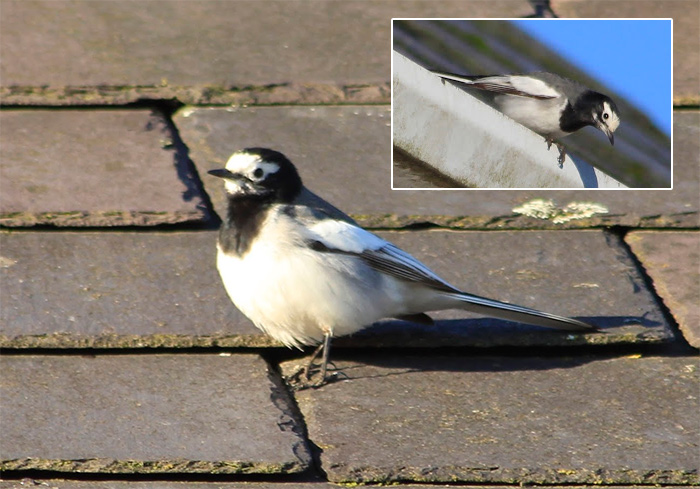
White Wagtails are still very much ‘under the radar’ vagrants, with a relatively low likelihood of detection. How many of us routinely check Pied Wagtails? With leucopsis and personata now recorded, the obvious next candidate is ‘East Siberian Wagtail’ (ocularis). With an extensive Siberian range this is, on paper at least, the most likely form to occur but other vagrancy candidates include ‘Moroccan Wagtail’ (subpersonata), the south Siberian and Mongolian ‘Baikal Wagtail’ (baicalensis) and perhaps even the East Asian ‘Black-backed Wagtail’ (lugens).
Otherwise, the most exciting event of the week, though mainly for those in Kent, was the reappearance on 26th of last week’s Forster’s Tern at Folkestone. Here it lingered from late morning until mid-afternoon but there was no further sign thereafter. This was the second record for Kent and, assuming it hasn’t already crossed the Channel, it may yet grace another county or two.
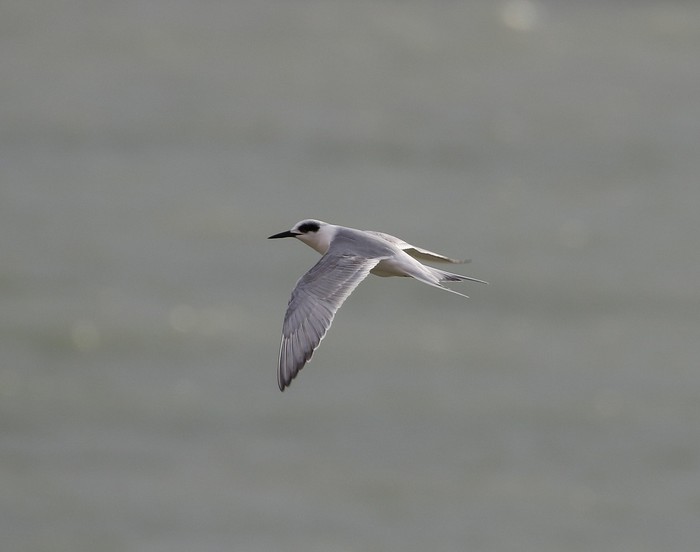
This bird’s brief sojourn in Suffolk and Essex was perhaps surprising. The complex estuaries this part of East Anglia would be a good area in which to spend the winter (as did the bird in Essex from November 1998 to April 2000) but this bird clearly hadn’t read the history books.
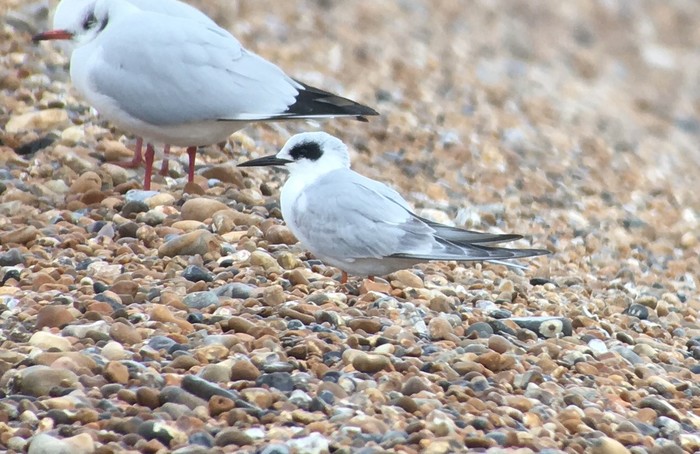
The male ‘Eastern Black Redstart’ was still at Skinningrove, Cleveland to 29th. This is a hardy montane species in its native Central Asia so perhaps it might attempt to winter. The nearest we have come so far to a wintering ‘Eastern Black Redstart’ was the bird on St. Mary’s, Isles of Scilly from 30th November 2014 to 12th January 2015.
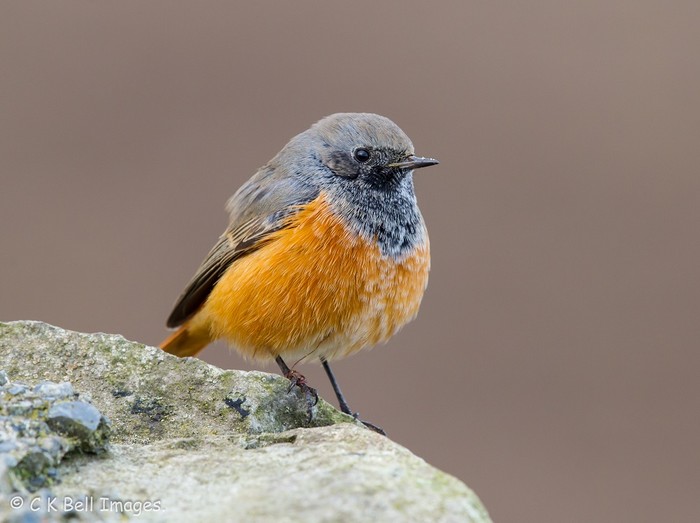
Also still present at the end of the week was the Isabelline Wheatear at Burnham Overy Dunes, Norfolk though news of its continued presence on 29th came as something of a surprise given that it hadn’t been reported since 12th! This now becomes the latest Isabelline Wheatear recorded in Britain, just pipping the bird at North Gare, Cleveland on 23rd to 27th November 2014.
Lingering too was the Killdeer still in its favoured fields at Sandwick, Mainland Shetland to at least 28th. Could this be a potential winterer too?
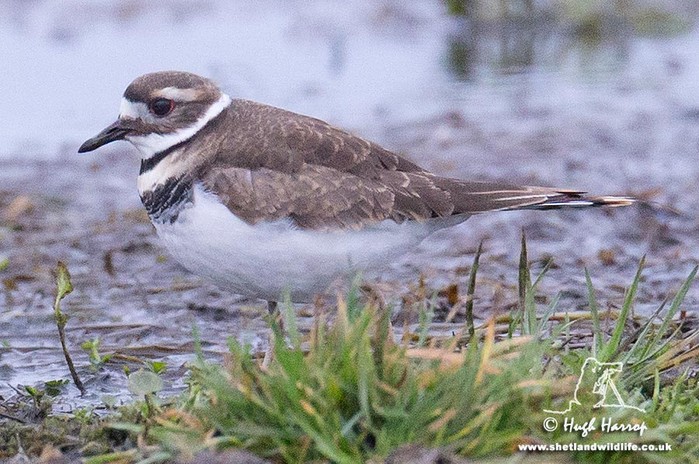
Another possible long term resident is the American Coot , still at Balranald, North Uist, Western Isles to at least 24th though reports of its presence are understandably intermittent.
The juvenile Pallid Harrier was still around this week too, back at Welwick (and also at Stone Creek), Yorkshire from 24th to 29th. This bird has been wandering quite widely, regularly crossing the Humber between Yorkshire and Lincolnshire, so has been quite difficult to track. Nevertheless, it appears to be settling in for the long haul too.
Finally, outperforming all of the above in the long-staying stakes, the Hudsonian Whimbrel was still on the beach at Perranuthnoe, Cornwall at the end of the week. The week’s big news, however, was negative news. For the first time in weeks there was no sign of the Dalmatian Pelican, last seen over Botallack, Cornwall on 20th (but perhaps seen again at Restronguet Creek on 22nd?). Quite what any of this means for its credentials as a wild bird is anyone’s guess but it is now clearly at large again, either still in Cornwall, somewhere as yet undiscovered elsewhere in Britain or, perhaps, back on the near-continent.
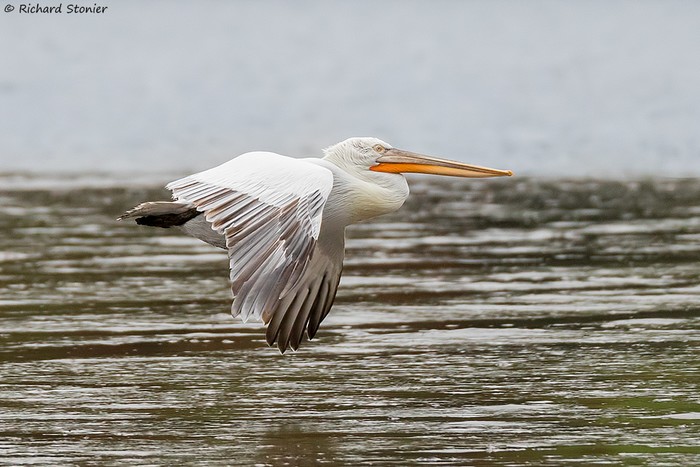
‘Euronews’ was also a bit quieter this week, the headline species being (as ever) Siberian Accentor . Two more were discovered this week, one in Finland and one in Sweden. These occurrences (perhaps the last of the influx?) place Sweden just ahead of Finland (74 compared with 73) in this autumn’s Siberian Accentor challenge.
Other Western Palearctic news included a Falcated Duck , a Hume’s Yellow-browed Warbler and yet another Pine Bunting in the Netherlands, a Dusky Warbler in Denmark, a Forster’s Tern and a Pallas’s Warbler in Spain, a Rustic Bunting on Cyprus (the island’s first), an Eider on the Azores, a Pterodroma petrel sp. in Israel, a Leach’s Petrel in Latvia and Belarus’s first Glaucous Gull .
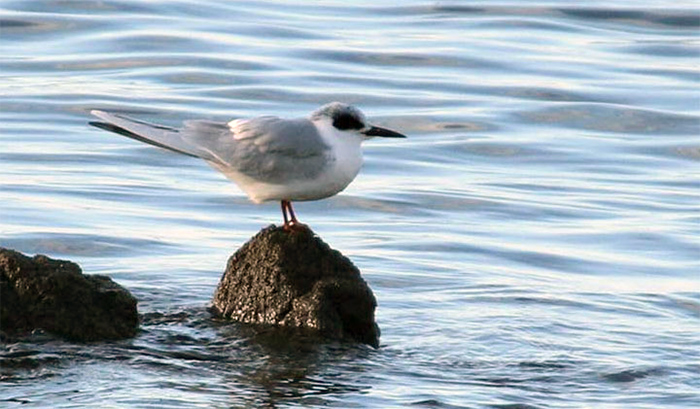
The seabird headlines were once again grabbed by White-billed Divers off Papa Westray, Orkney where five were still present on 27th. Otherwise, there were just ten Little Auks - at Filey, Yorkshire on 23rd, Flamborough, also Yorkshire, Birchington, Kent and Hengistbury Head, Dorset on 24th, Stevenston Point, Ayrshire and Hemsby, Norfolk (three) on 25th, Dunnet Bay, Highland on 26th and Whitburn, Durham on 28th. Finally, on 24th, Leach’s Petrels were off Hemsby, Norfolk and Huttoft, Lincolnshire and Grey Phalaropes at Bray, Wicklow and Holme Pierrepont, Nottinghamshire. Another Grey Phalarope was off Filey, Yorkshire on 28th.
Turning to wildfowl, the interior/parvipes Canada Goose remained in the Brancaster, Docking and Burnham Market area, Norfolk all week with others at Portgordon, Moray on 23rd and Mainsriddle, Dumfries and Galloway on 28th. Also in Scotland, a Snow Goose was at Aith, Forth on 26th. Most of the wintering ‘Black Brants’ were again reported this week - at Pagham Harbour, Sussex, Old Hall Marshes and St. Osyth, Essex, Easington/Kilnsea, Yorkshire (two) and Ferrybridge, Dorset.
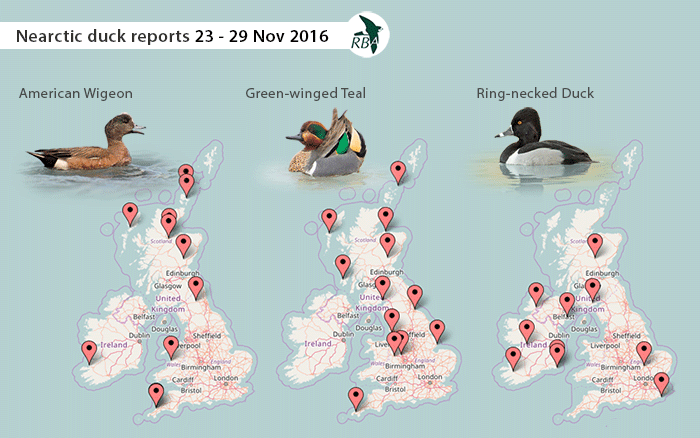
Back in Scotland, the best duck was the drake Hooded Merganser at Lochwinnoch, Clyde on 23rd and then back at Kilbirnie Loch on 24th to 29th. Otherwise, the rarest duck was the Lesser Scaup still on Birsay, Orkney to at least 27th. Other Nearctic wildfowl included ten American Wigeons - at Ynyslas, Ceredigion, Grindon Lough, Northumberland, Clachnaharry, Muirtown Basin and Udale Bay, all Highland, Loch of Lintrathen, Angus, Newquay, Cornwall, Westray and Kirkwall, both Orkney, and Barrow Harbour, Kerry. Green-winged Teals numbered nine - at Woolston Eyes, Cheshire, Skegness, Lincolnshire, Venus Pool, Shropshire, Martin Mere, Lancashire, North Uist, Western Isles, Hayle Estuary, Cornwall, Elgin, Moray, Caerlaverock, Dumfries and Galloway, and Saltholme, Cleveland.
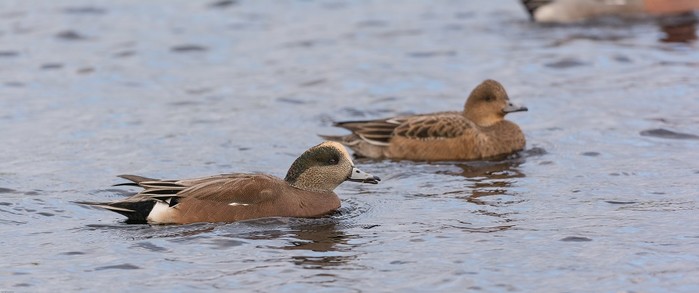
As for diving ducks, Ring-necked Ducks totalled nine also - at Paxton Pits, Cambridgeshire, Carlingwark Loch, Dumfries and Galloway, Killarney, Kerry, Dungeness, Kent, Lough Mourne, Donegal, Quoile Pondage, Down, North Slob and Tacumshin, both Wexford, and Loughrea, Galway. Finally, last winter’s Ferruginous Duck was back at Washington WWT, Durham from 24th and others were at Blashford Lakes, Hampshire on 25th and Theale Gravel Pits, Berkshire on 29th.
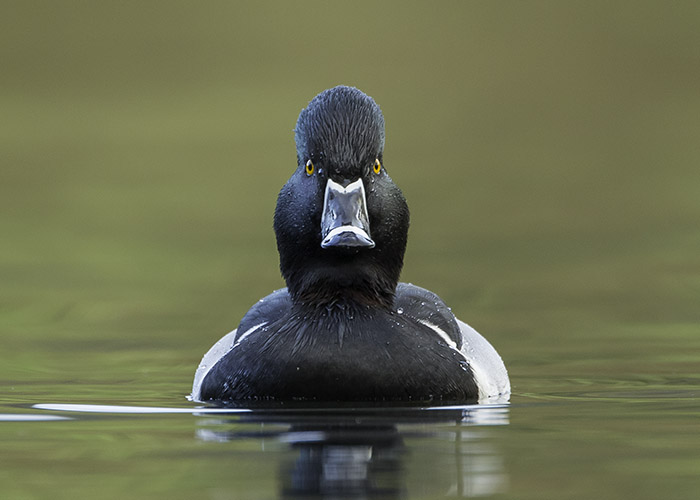
At sea, Surf Scoters were at Musselburgh, Lothian, Out Head and Largo Bay, both Fife, and Murvagh, Donegal. Special mention must also be made of the larger than normal numbers of both Velvet Scoters and Long-tailed Ducks around North Sea coasts at the moment.
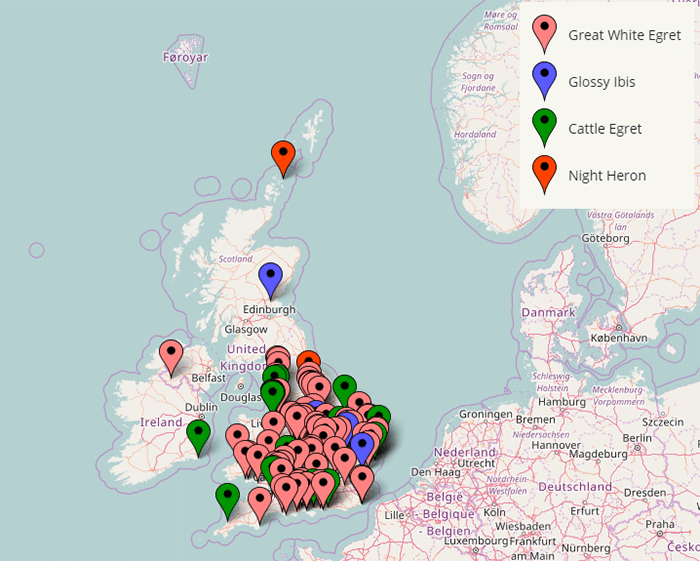
Single Night Herons at Staveley, Yorkshire and on Sanday, Orkney, both on 24th, were something of a surprise. Otherwise it was very much ‘business as usual’ for the herons. Great White Egrets were again widespread with the largest counts being twelve at Dungeness, Kent and seventeen at Blagdon Lake, Somerset. Cattle Egrets totalled around thirty from Lancashire southwards. The best single site totals were six at Tacumshin, Wexford, four at Saul, Gloucestershire and Burton Mere, Cheshire and Wirral and three at Gapton Marshes, Norfolk and Marshside, Lancashire.
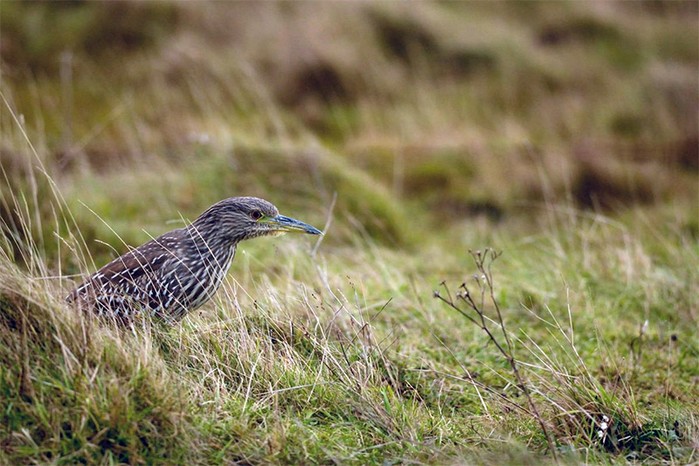
Glossy Ibises numbered five this week. Three were regulars - at Fingringhoe Wick, Essex, Ely, Cambridgeshire and Cossington Meadows, Leicestershire but there were also singles at Collessie, Fife on 25th and Horsey Island, Devon on 29th.
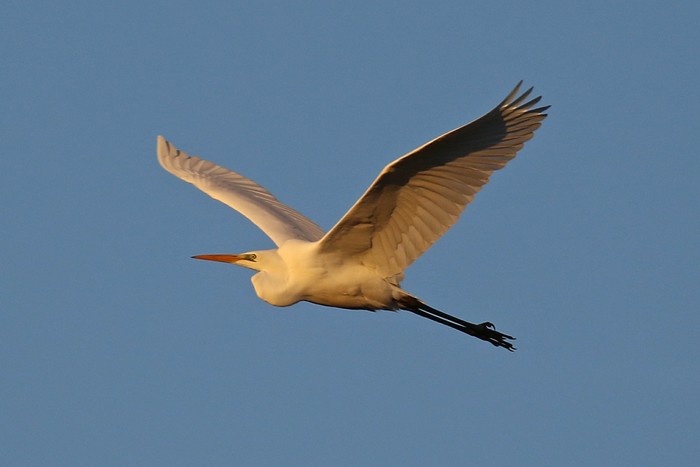
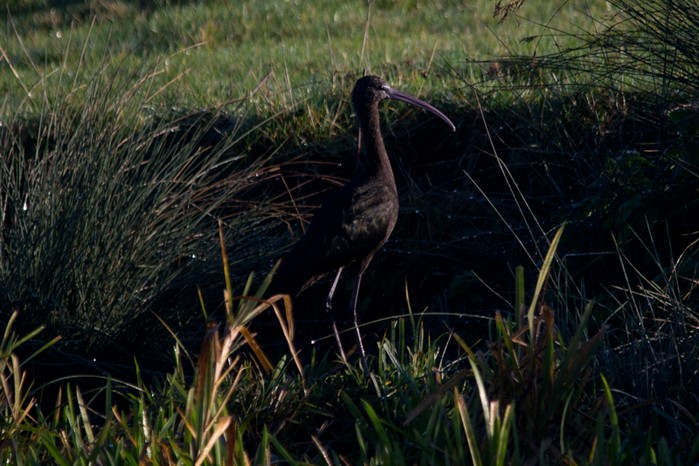
A Rough-legged Buzzard was at Haddiscoe, Norfolk still to at least 25th with it or another at Blakeney, also Norfolk, on 28th.
An American Golden Plover over Polgigga, Cornwall on 25th was new but otherwise the rare waders were all lingerers - the Semipalmated Sandpiper at Tacumshin, Wexford, the Lesser Yellowlegs at Poole Harbour, Dorset and the Long-billed Dowitchers at Faversham, Kent and Tacumshin.
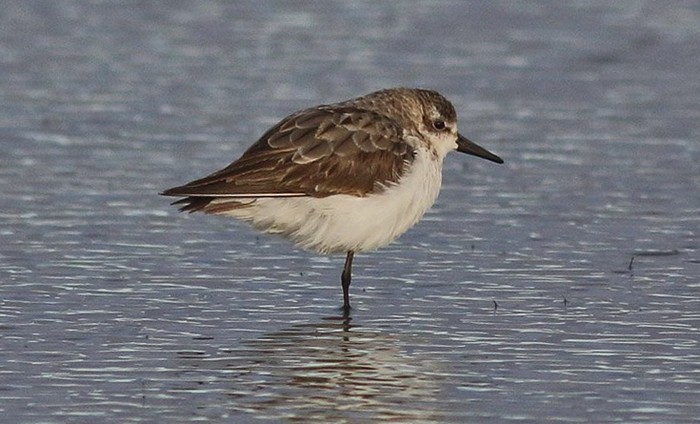
The best gull discovery of the week was an apparent third-winter ‘Azorean Yellow-legged Gull’ at Wembury Point, Devon on 23rd. Otherwise, the two semi-resident adult Bonaparte’s Gulls were both still in place - at Dawlish and Exmouth, both Devon, to 29th and Quilty, Clare to at least 27th.
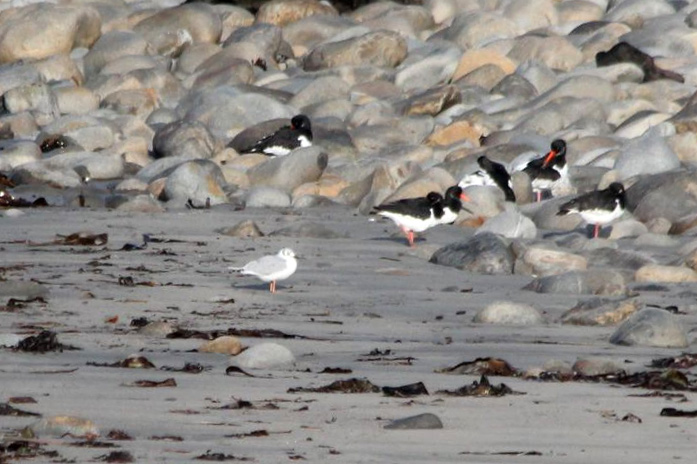
As for scarce gulls, previously present Ring-billed Gulls were at Blashford Lakes, Hampshire still to 29th and at Ennis, Clare to at least 23rd with a new bird (a second-winter) discovered at Chelmarsh Reservoir, Shropshire on 29th. Caspian Gulls were widely reported throughout the Southeast and the Midlands but a remarkable eleven were at Albert Village Lake, Leicestershire on 28th.
There were no significant numbers of Glaucous Gulls this week with only eleven reported - at Sandbach, Cheshire on 23rd and 28th, Southwold, Suffolk and Unst, Shetland (two) on 24th, Reculver, Kent on 25th and 28th, Landguard, Suffolk on 25th, Tiree, Argyll on 26th, Killybegs, Donegal and Shoeburyness, Essex on 27th, Eyebrook Reservoir, Leicestershire on 28th and Mallaig, Highland on 29th.
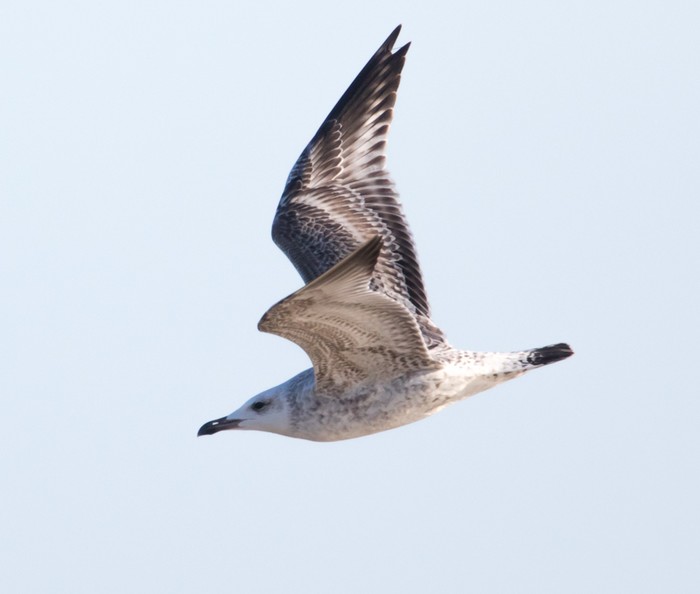
Iceland Gulls were almost as numerous, with seven noted - at Newbiggin, Northumberland on 23rd Beddington, London, Barra, Western Isles and Unst, Shetland on 24th, North Blyth, Northumberland on 25th, Lossiemouth, Moray and Anglers Country Park, Yorkshire on 26th and Loch Spynie, Moray on 28th.
Finally, Ireland’s resident Forster’s Tern was at Mutton Island, Galway on 26th and 27th.
Perhaps the last hints of autumn were provided by a Dusky Warbler trapped at Holme, Norfolk on 23rd and a new Desert Wheatear (another first-winter male) at Cooden Beach, Sussex on 28th to 29th. Meanwhile the long-staying Desert Wheatear was still at Thurlestone, Devon to 29th and a Dusky Warbler was retrapped at Polgigga, Cornwall on 23rd. Around a dozen Yellow-browed Warblers were noted, mostly in the Southwest where three were at Polgigga on 23rd. Elsewhere, singles were at Eaton Ford, Cambridgeshire and North Uist, Western Isles on 24th and Pickerings Pasture, Cheshire on 25th. A bird at Gibraltar Point, Lincolnshire on 23rd (identified as either this species or Hume’s Yellow-browed Warbler) was also a new east coast arrival (and just across the Wash from the Holme Dusky Warbler).
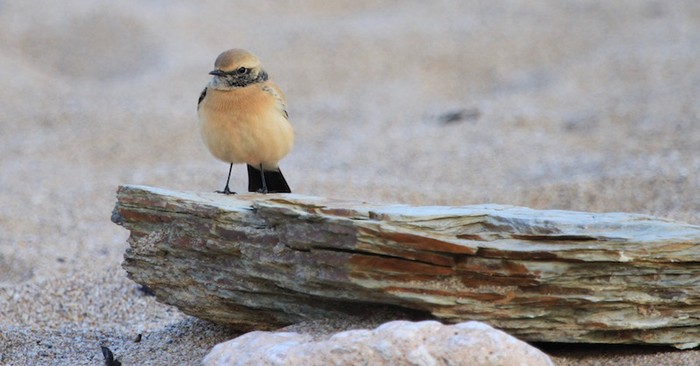
Other eastern passerines included a Barred Warbler at Rhos-on-Sea, Conwy on 24th (and present since 20th), a juvenile Rose-coloured Starling at Broadfield, Sussex on 27th to 29th and Richard’s Pipits at Eastbourne, Sussex on 23rd, Sheppey, Kent on 25th and North Gare, Cleveland on 26th.
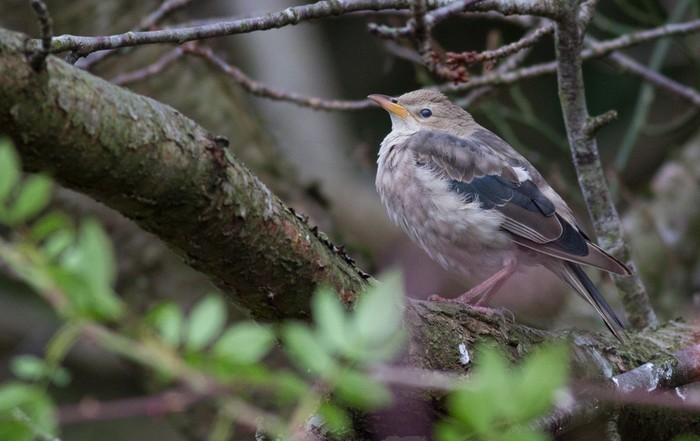
As for winter passerines, the best was a rather smart but frustratingly elusive ‘Coues’s Arctic Redpoll’ at Salthouse, Norfolk on 24th to 26th (though it had possibly been present for some time prior to 24th). Also in East Anglia, the ‘Black-bellied Dipper’ was still at Needham Market, Suffolk to 26th but not thereafter.
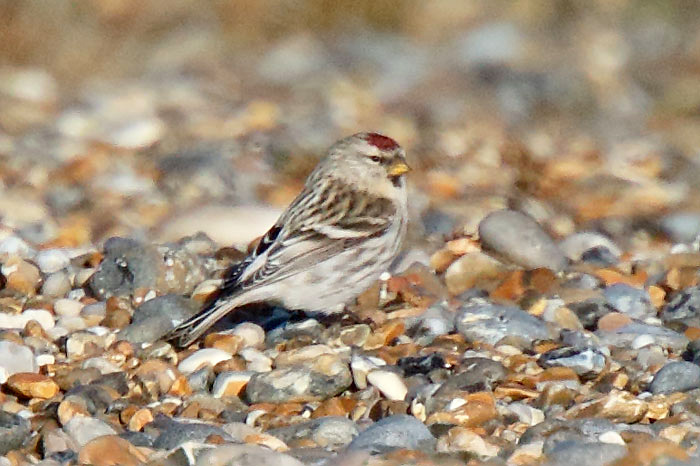
Up to twenty-five Great Grey Shrikes were well distributed from Dumfries and Galloway and Northumberland in the north to Devon in the south, though most were in the west. Shore Larks were concentrated mainly at Tyninghame, Lothian (up to 34), East Chevington, Northumberland (seven) and Norfolk (up to 34 at Holkham and small numbers scattered around other a handful of other sites). Away from North Sea coasts, the bird at Garway Hill, Herefordshire was seen again on 24th.
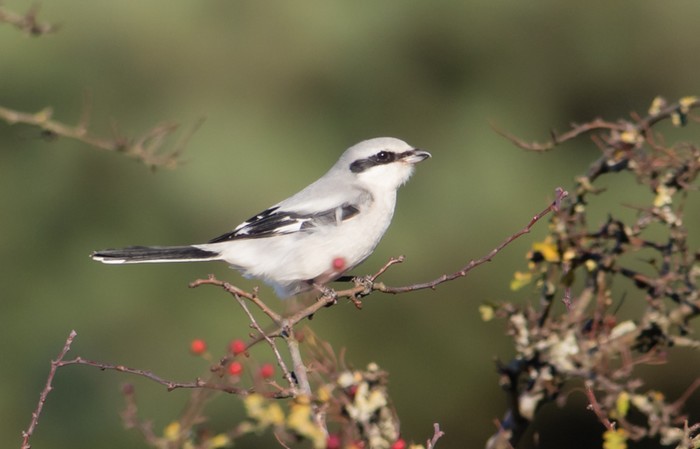
Finally, Waxwings remained very much in evidence though the big flocks were all still in Scotland and Northeast England. These included 100 in Aberdeen and 530 Kincorth, both Aberdeenshire, 500 in Elgin and 400 in Forres, both Moray, 180 in Aviemore, 200 in Rosemarkie, 179 in Inverness and 100 in Kirkhill, all Highland, 100 in Glasgow, Clyde, 100 in Falkirk, Forth, 150 in Hexham, Northumberland, 100 in South Shields, Durham, 125 in Kendal and 350 in Dalston, both Cumbria, and 219 in Silsden, Yorkshire. Further south, small parties or singles reached Gwynedd, Conwy, Somerset, Kent, Hertfordshire, Surrey and, furthest of all, the Isles of Scilly.
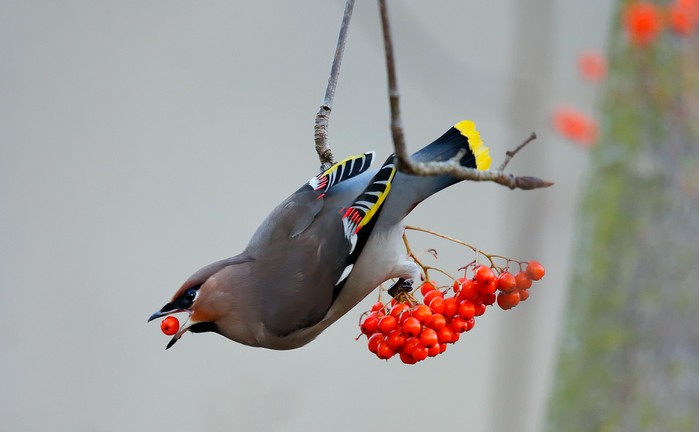
The week ahead looks as though it will see the continued dominance of high pressure, with cold temperatures and light winds but increasing cloud. The lack of an obvious vector from anywhere rather suggests a rather quiet period for birds but, given this week’s events, it would be unwise to rule out a further surprise. After such an incredible October what else might be lurking out there?
Andy Stoddart
30 November 2016
